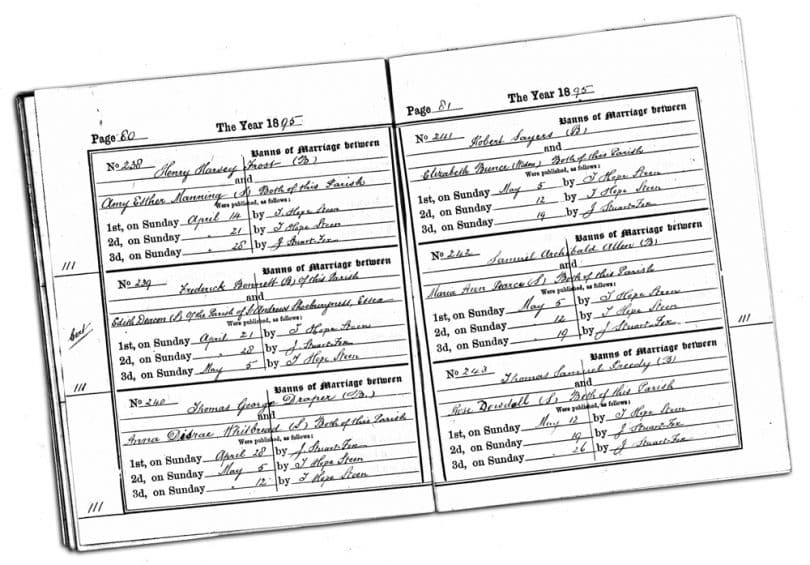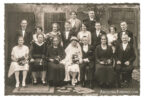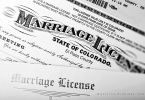Long before people needed a license of a bond to get married, they were married with banns. What are banns? They are part of an ancient marriage tradition that was used in early colonial America, and in most parts of Europe going back deep into medieval times. If you are looking for marriage records early enough in history, you may find marriage banns instead. These are just as useful to your genealogy research, though perhaps in a different way than traditional marriage licenses.
This is what you need to know about marriage banns.
The marriage banns were the standard way people got legally married for centuries in the western world. The banns were announcements of the intended marriage. These could be read at the pulpit at church on a Sunday, or posted on the door of the intended couple’s local church. The custom was usually to read the banns out loud in church for three Sundays in a row, or to keep them posted on the church door for three weeks.
What was the purpose of making this kind of announcement in this way? It served just one purpose, but it was a very important purpose from the church’s standpoint (and, remember, the church governed whether or not a couple could get married for centuries, before civil marriage became a thing). That purpose was to make sure the local community knew there was a wedding being planned, so that anyone who had an objection to the proposed wedding had a chance to come forward before the wedding took place.
That bit in today’s marriage ceremonies that says if anyone objects to the marriage, they should say so now or forever hold their peace is a remnant of the custom of the banns. Believe it or not, it was not just a formality in those days. People sometimes did have objections to a proposed wedding, and they would and did come forward with those concerns.
Usually, someone with an objection to the marriage knew there was a legal reason why the bride and groom should not be married. A common reason was because the bride, groom, or both were too young to marry without parental consent (or even with it), or that one or both of them were already married to someone else. Sometimes, objections were made because the prospective bride and groom were too closely related for the marriage to be legal.
Banns were required for a marriage to be legal in England as early as 1215 A.D. They continued to be the most common way a marriage was legalized in much of the western world until the 1800s and early 1900s. The banns gradually faded away as marriage bonds and civil registration took the place of the banns.
If you discover marriage banns for your ancestors, you will usually find them in old newspaper records or old church records. The name of the groom, the bride’s first name (and sometimes her maiden name) will be included. Other information you may or may not find include their towns of residence, names of one or more of their parents, and intended date of marriage. This will give you an idea of when the couple did get married, and also give you other names and places you can use in your genealogy research.







